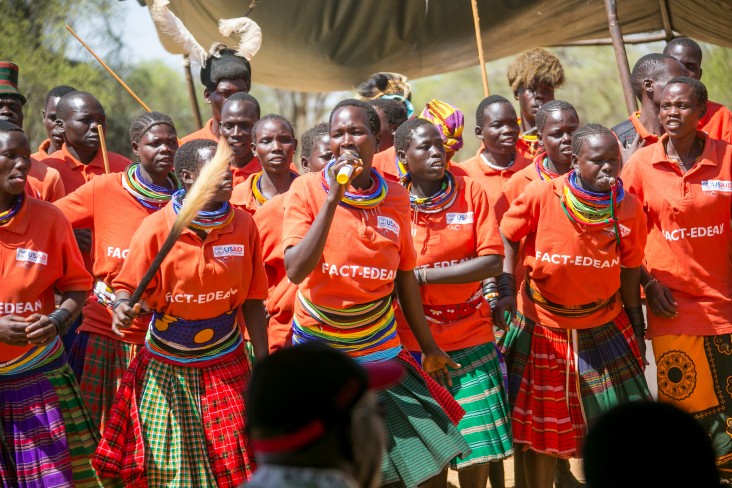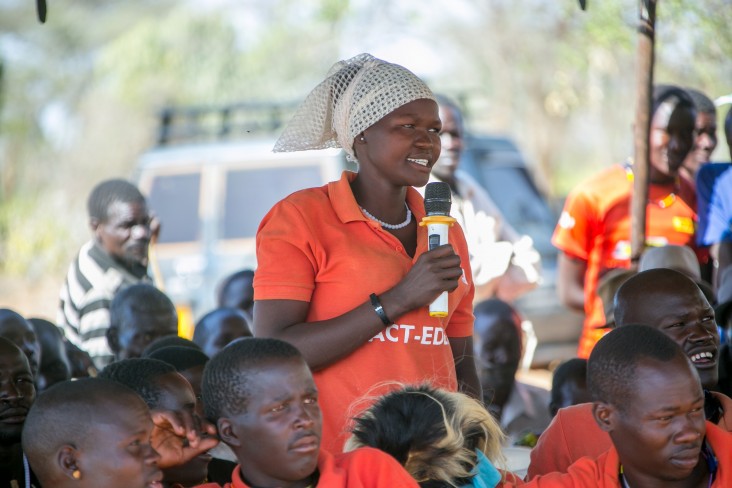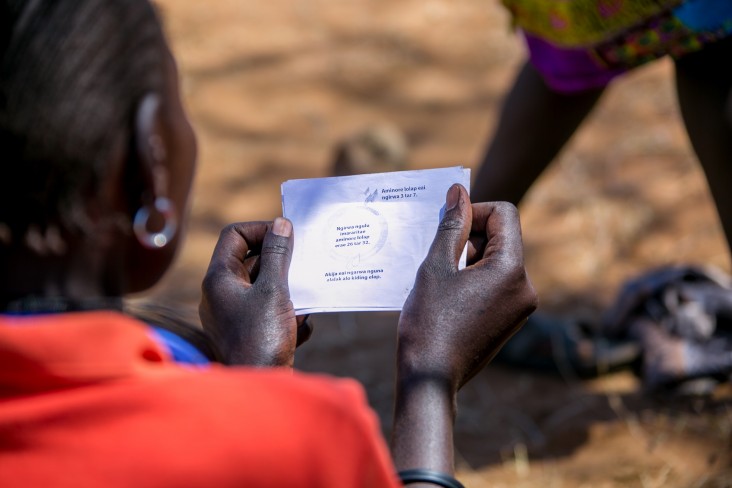- What We Do
- Agriculture and Food Security
- Democracy, Human Rights and Governance
- Economic Growth and Trade
- Education
- Environment and Global Climate Change
- Gender Equality and Women's Empowerment
- Global Health
- Humanitarian Assistance
- Transformation at USAID
- Water and Sanitation
- Working in Crises and Conflict
- U.S. Global Development Lab
Speeches Shim
In Uganda, community members perform in skits to help couples learn about family planning

In Uganda, Nakut Lucia saw a challenge in her own home and community: couples wanted to space their pregnancies but did not know how.
“I was not doing child spacing,” said Nakut, 24. “I was over producing children, and I found I was having problems with these children.”
Healthy timing and spacing of pregnancy is critical to the health of mothers and babies. When children are spaced several years apart, parents are better able to provide for their children, ensuring they eat the right food for good nutrition. It also allows mothers to physically recover before they become pregnant again.

In the Karamoja region of Uganda, where Nakut lives, people have traditionally spaced pregnancies by practicing postpartum abstinence.
Following the birth of a child, men migrated with their cattle for extended periods of time. The recent transition from a nomadic to settled lifestyle has altered these traditional child spacing practices for the Karamojong.
“That is how we used to do family planning,” Nakut said, “Nowadays we are with our partners all the time, and there’s no child spacing.”
At the same time, droughts in the region have made it more difficult to support large families. Though couples would like to space their pregnancies, fewer than one in ten Karamojong women uses a modern method of family planning. Research shows that misconceptions about pregnancy and side effects of family planning methods are key barriers to family planning use.
To address these misconceptions and strengthen child spacing practices, a USAID project used an unconventional, yet culturally-sensitive approach: community theater.

Through a pilot program called EDEAN, an acronym that stands for “Let’s Come Together and Support Child Spacing” in the local language, community members participate in skits that spark discussions and impart knowledge to their neighbors. For the pilot, each community nominated a group of young men and women to participate in peer group meetings. Two moderators facilitated discussions on couple communication, menstruation, fertility, and family planning.
Nakut was a member of a peer group in her community. “The moderators teach me, then I have to go and spread the information out to others,” she said.
Peer group members then rehearsed short dramas about each subject, some pre-written and others created by the members themselves. Finally, the peer groups performed for their community. The performances were followed by a Q&A with local health workers, so the audience could reflect on how to apply the lessons to their own lives.
“The knowledge I have found is now in my heart and my mind,” Nakut said.

Since the pilot, Nakut has started practicing family planning. She now knows that spacing her pregnancies will allow her family to save enough money to send her children to school someday.
She continues to share what she learned. “I always tell my friends, like my younger sister who does not have a husband yet.” She showed the pilot’s manuals and materials to her parents and her husband, who she said are pleased that she brought this new information to their family.
Results from the pilot project showed that viewing the performances was strongly associated with higher fertility awareness, intent to use modern family planning, and seeking family planning information from a health worker.
Overall, the community theater approach was found to be a feasible and acceptable way to increase demand for family planning information and methods in Karamoja.

Nakut said if she were to give advice to other communities considering participating in the program, “I would tell those people to accept this information of EDEAN because it has been so good for us. That information has come to give us knowledge and remove the misunderstandings.”
EDEAN is part of the Fertility Awareness for Community Transformation (FACT) Project, which fosters an environment where women and men can take actions to protect their reproductive health by testing strategies to increase fertility awareness and expand access to fertility awareness-based methods at the community level.
About the Author
Sammie Hill is a communications consultant for Georgetown University’s Institute for Reproductive Health (IRH). IRH was founded in 1985 as part of the Georgetown University Medical Center to address family planning gaps worldwide.

Comment
Make a general inquiry or suggest an improvement.